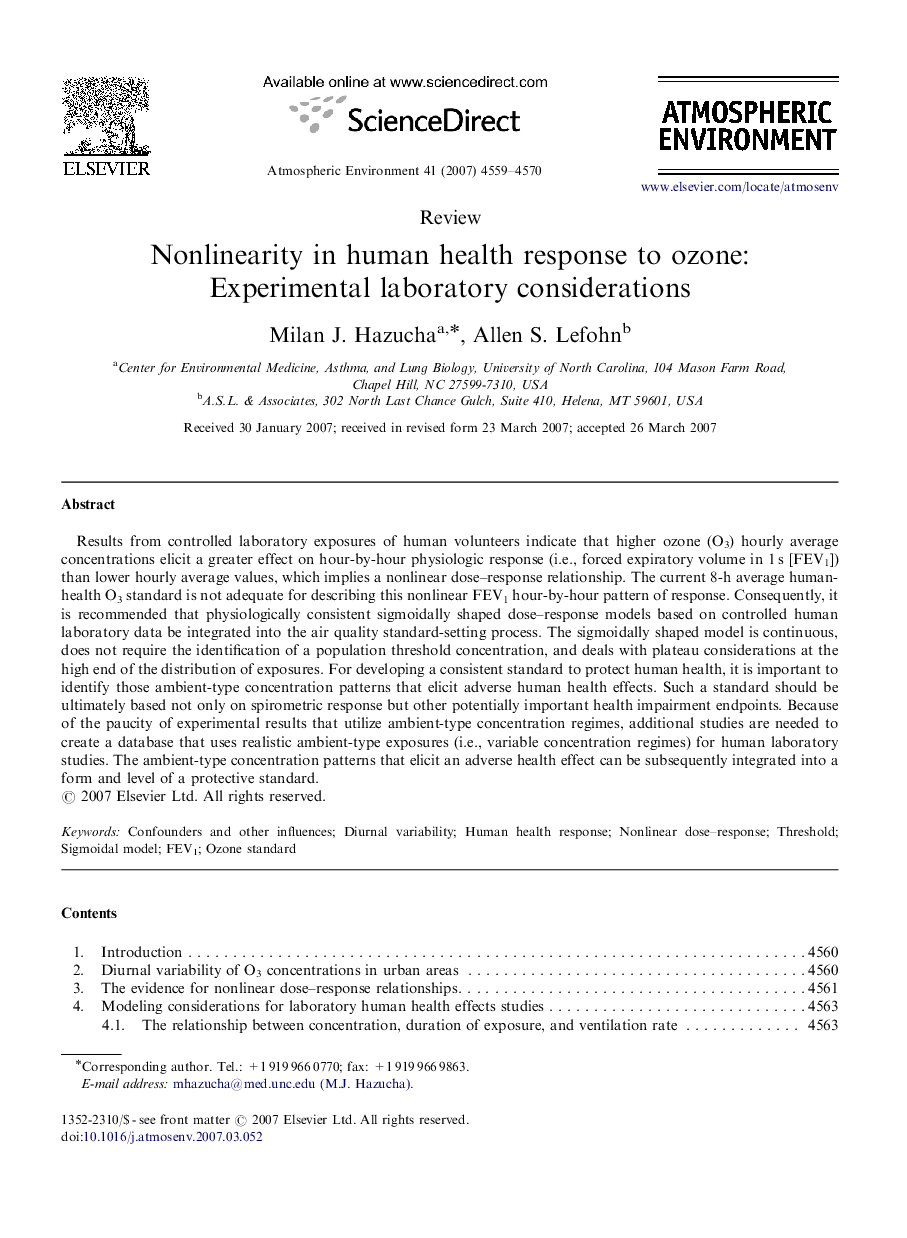| Article ID | Journal | Published Year | Pages | File Type |
|---|---|---|---|---|
| 4443525 | Atmospheric Environment | 2007 | 12 Pages |
Results from controlled laboratory exposures of human volunteers indicate that higher ozone (O3) hourly average concentrations elicit a greater effect on hour-by-hour physiologic response (i.e., forced expiratory volume in 1 s [FEV1]) than lower hourly average values, which implies a nonlinear dose–response relationship. The current 8-h average human-health O3 standard is not adequate for describing this nonlinear FEV1 hour-by-hour pattern of response. Consequently, it is recommended that physiologically consistent sigmoidally shaped dose–response models based on controlled human laboratory data be integrated into the air quality standard-setting process. The sigmoidally shaped model is continuous, does not require the identification of a population threshold concentration, and deals with plateau considerations at the high end of the distribution of exposures. For developing a consistent standard to protect human health, it is important to identify those ambient-type concentration patterns that elicit adverse human health effects. Such a standard should be ultimately based not only on spirometric response but other potentially important health impairment endpoints. Because of the paucity of experimental results that utilize ambient-type concentration regimes, additional studies are needed to create a database that uses realistic ambient-type exposures (i.e., variable concentration regimes) for human laboratory studies. The ambient-type concentration patterns that elicit an adverse health effect can be subsequently integrated into a form and level of a protective standard.
